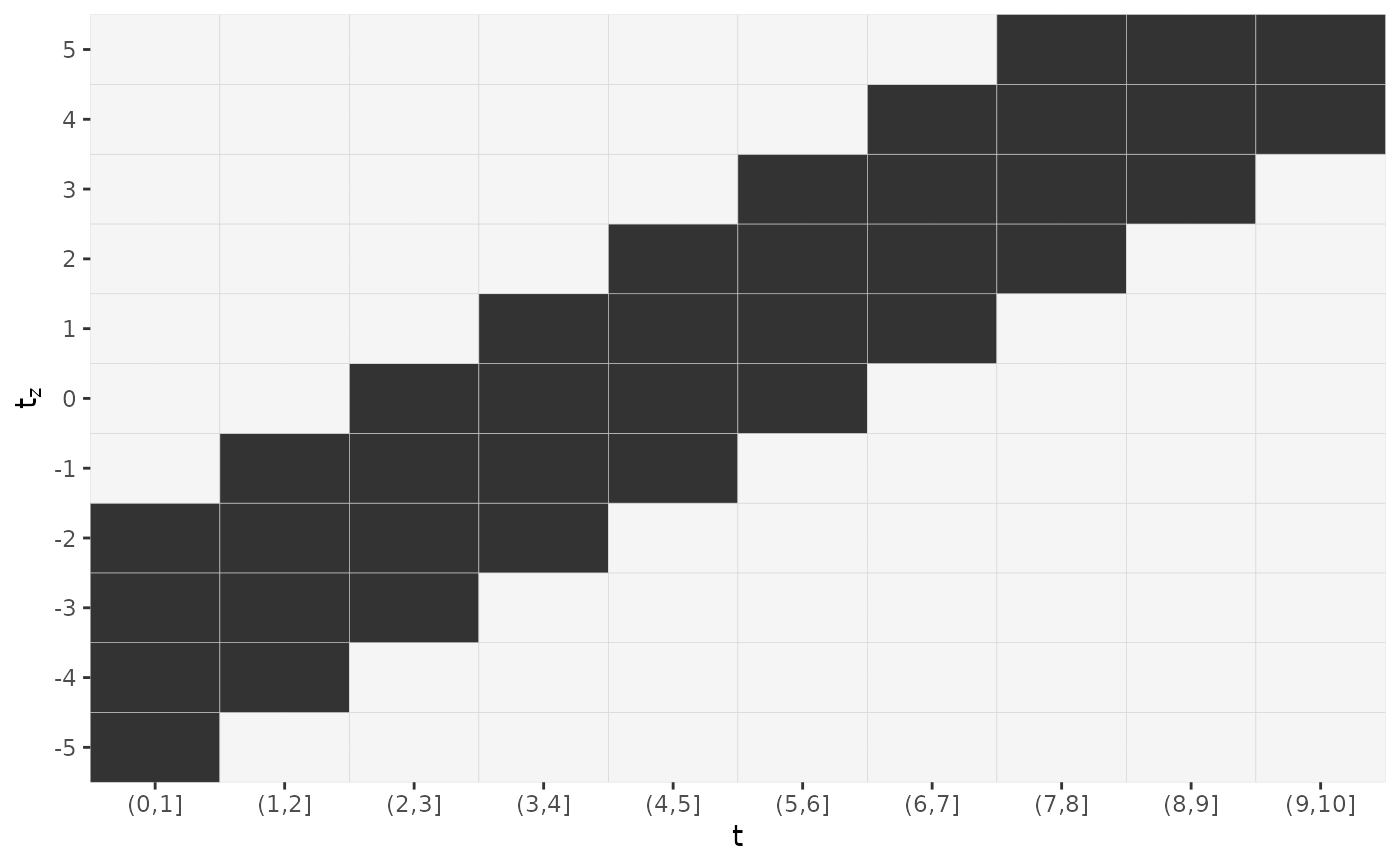Construct or extract data that represents a lag-lead window
Source:R/lag-lead-utils.R
get_laglead.RdConstructs lag-lead window data set from raw inputs or from data objects
with suitable information stored in attributes, e.g., objects created
by as_ped.
get_laglead(x, ...)
# Default S3 method
get_laglead(x, tz, ll_fun, ...)
# S3 method for class 'data.frame'
get_laglead(x, ...)Arguments
Examples
get_laglead(0:10, tz=-5:5, ll_fun=function(t, tz) { t >= tz + 2 & t <= tz + 2 + 3})
#> # A tibble: 121 × 3
#> t tz LL
#> <int> <int> <int>
#> 1 0 -5 0
#> 2 0 -4 0
#> 3 0 -3 0
#> 4 0 -2 0
#> 5 0 -1 0
#> 6 0 0 0
#> 7 0 1 0
#> 8 0 2 0
#> 9 0 3 0
#> 10 0 4 0
#> # ℹ 111 more rows
gg_laglead(0:10, tz=-5:5, ll_fun=function(t, tz) { t >= tz + 2 & t <= tz + 2 + 3})
